| Family: | Nyssaceae |
| Genus: | Nyssa |
| Species: | N. sylvatica |
| Common names: | Tupelo, black gum |
| ZBAS | 8 (0 to 10) Zach’s bee attraction score |
I have wondered about this elusive tree’s flowers for many years. I know tupelo honey is prized for its unique flavor and is available in more southern states, yet it is also a native plant in Michigan. Although unless you know what you are looking for, it is not a conspicuous tree to find, even when it is blooming. I have found out that there were about 6 trees in the MSU Horticulture Garden and one single tree in the Children’s Garden. So I have been scouting for honey bees on this flower for about 10 years. Some years I went there too early, other times (much more often) too late. One time it was right during blooming and I waited for 30 min with no bees coming. I do not do this every year because some years I did not remember to check it or was out of town during its blooming time. This year I went again, around 5 pm (sorry my camera still has the Beijing time on the camera) on May 24th , 2024. I checked the trees first in the Hort garden and they were all seeded! I must have missed it by about two weeks. I went to the Children’s Garden and for some reason it was in peak blooming!
Now it is a matter of waiting, my patience against how long the bees can hold off without visiting these beautiful flowers: a hint of blue but mostly green, small flowers. The first bee I saw was a solitary bee (a collectid, I am guessing. I am not very good any bees other than Apis). This gave me hope and finally after another 10 min a honey bee finally showed up low enough for me to shoot. I was lucky I brought a flash, or it would be difficult because I would be shooting against the sky with the tree so tall (compared to me, it is actually a medium sized tree about 20 ft) — the sky is always bright so you will get underexposed bees’ (underside, most of the time) if you are shooting beneath the flowers. Anyway I was lucky I got a few good ones after about 40 min.
Mike Connor, a beekeeping friend who sells trees that produce nectar or pollen for honey bees (Trees for Bees) also said he never got any photo of honey bees on this plant, so I did not feel too bad that I was not able to get them at that time. After all, he would be watching his trees blooming much more often than me, I presume.
Well, Michiganians (or Michiganders), go plant this tree in a 10 acre patch, it might produce enough reward for you! I saw one website selling 12 oz of tupelo honey for $29! That is about 3-4 times more value compared to your regular honey…
As usual, a blog by the Beetographer wont be so good without photos. So please enjoy:
1. A collectid bee foraging on tupelo flowers.
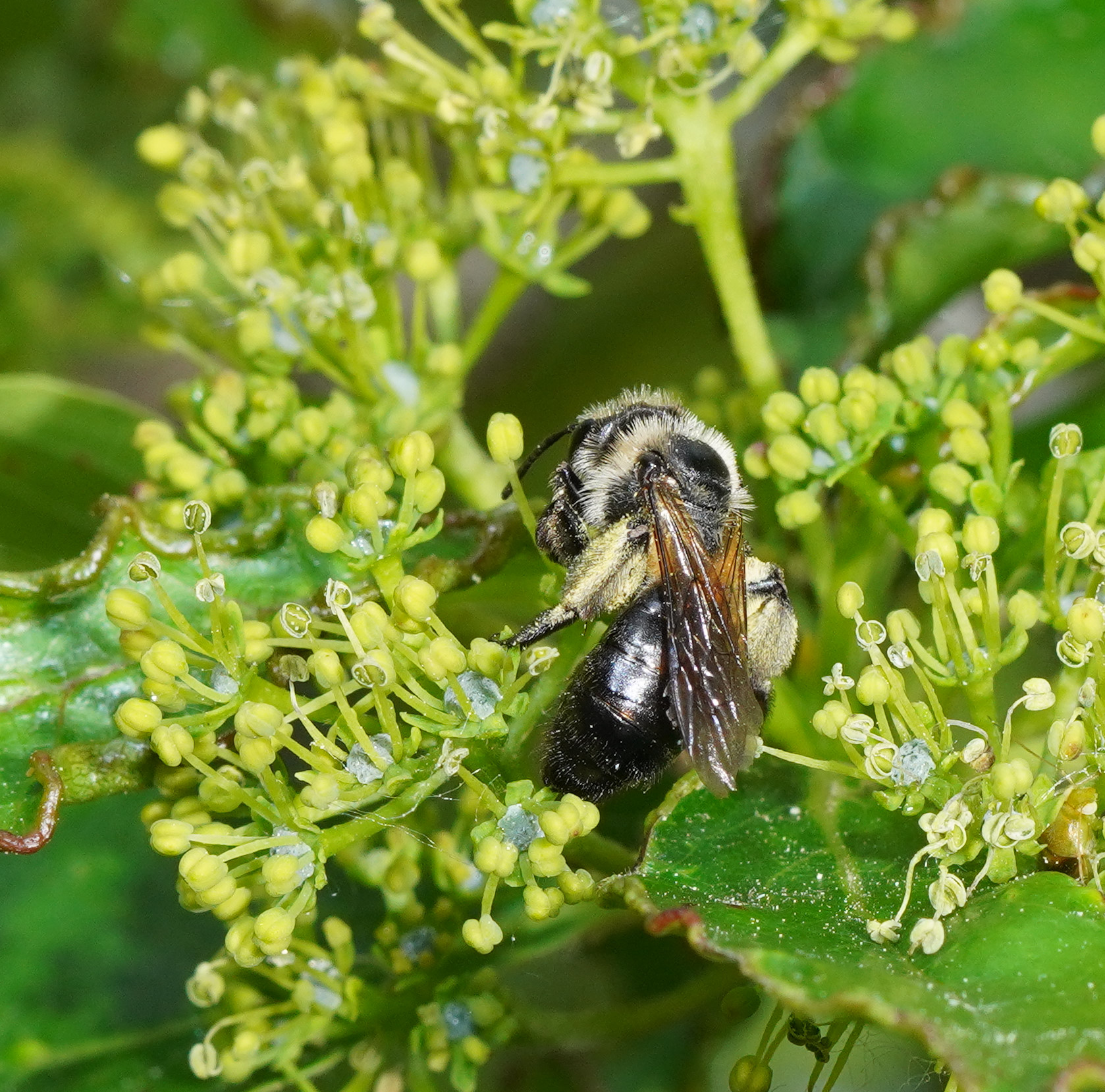
2. What did I say about shooting the underside of a bee? This one is actually kinda behind the bee.

3. This is bee was shot from the side, but you can also see that the camera was way lower than the bee’s height.
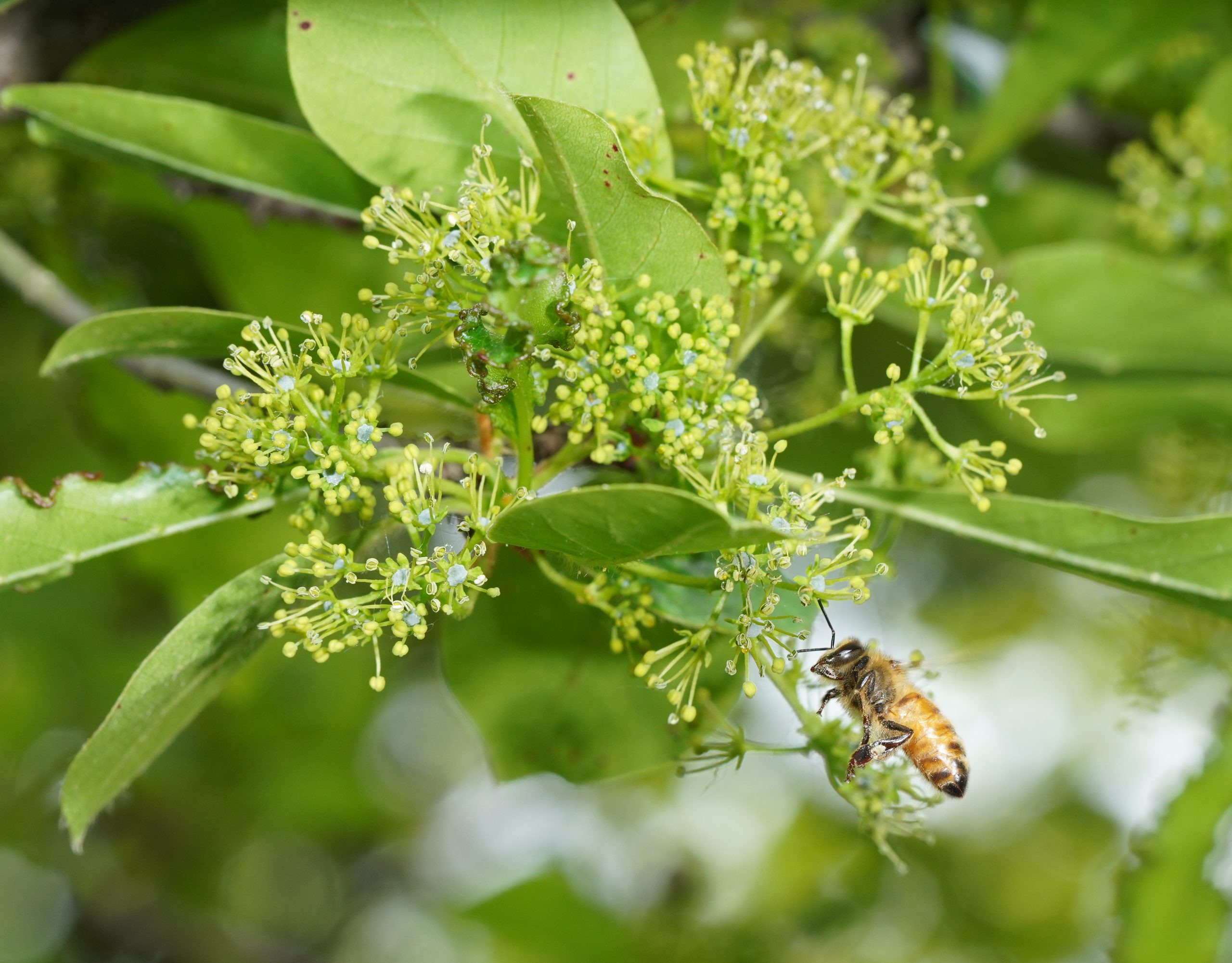
4. Finally I raised the camera really high to get an ok one. This is one of the advantages of a mirrorless which has a screen to see what you will be getting on the sensor. A digital SLR will be much more complicated with the ‘live-view’ on, which also makes it super slow to shoot.
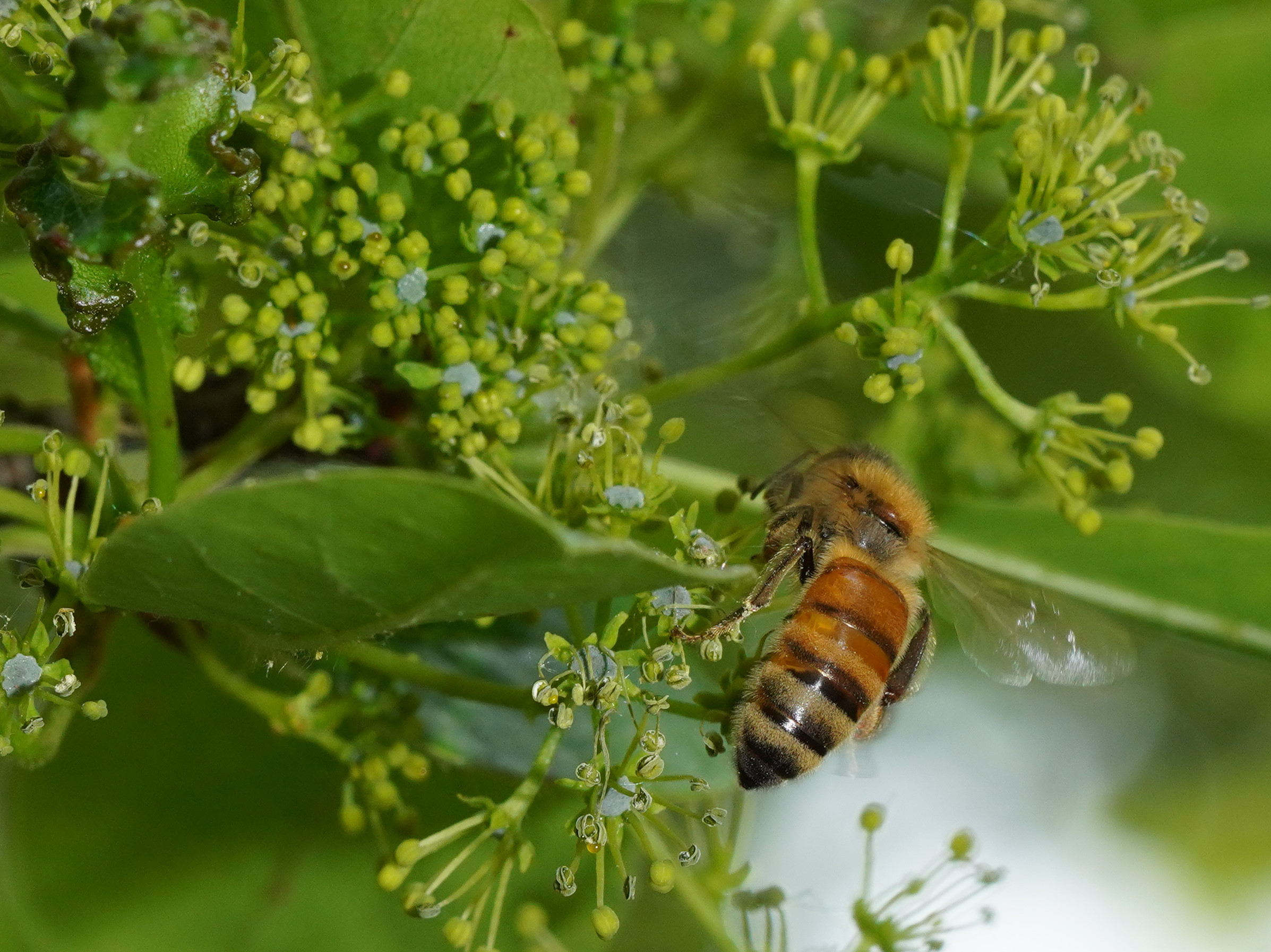
5. This would be my best shot in turns of angle, but alas, a small flower stalk was in the way. But I present it here, for you to appreciate how difficult it is to get shots of bees on flowers taller than you.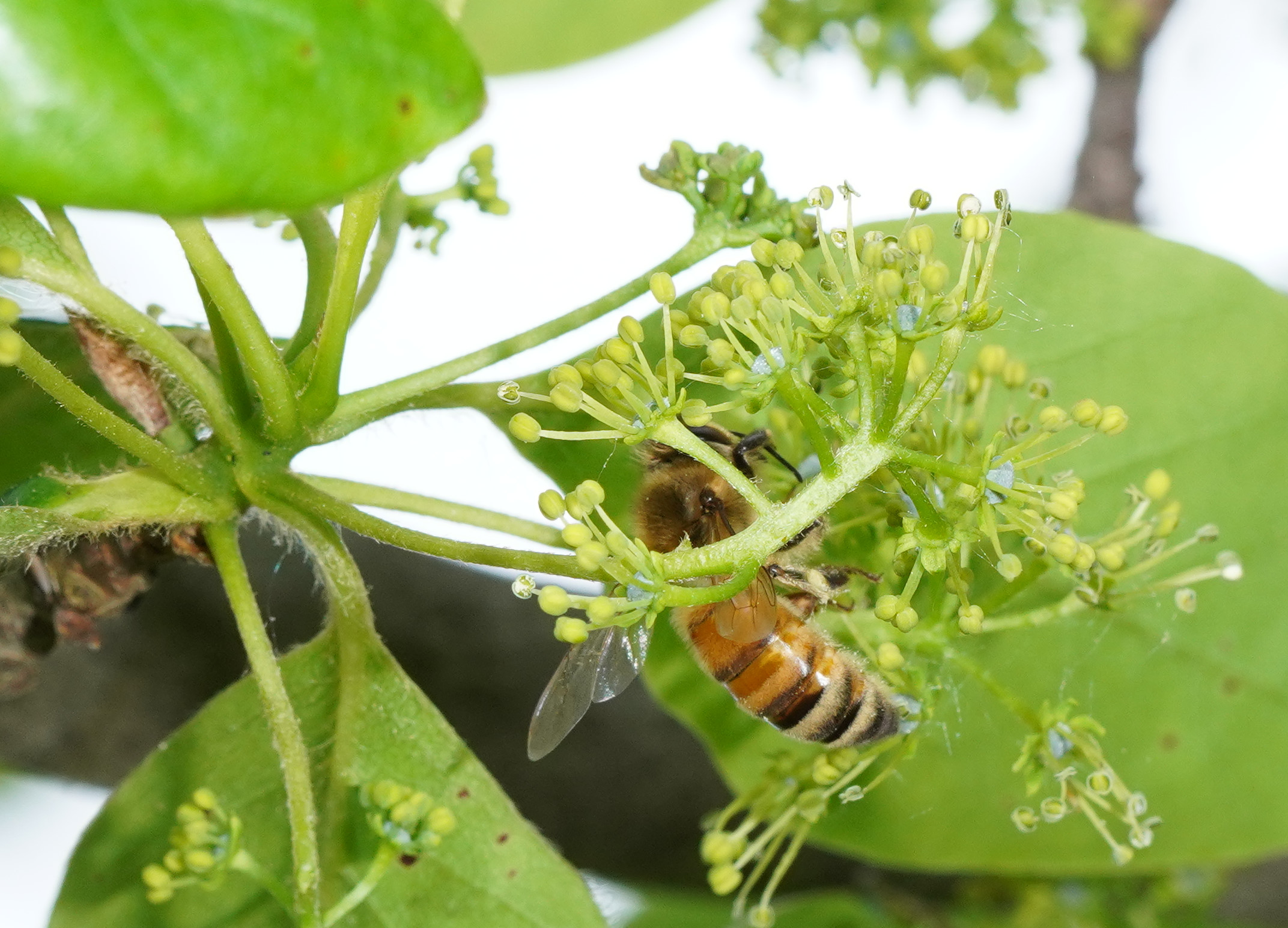
More photos are at the website, where you can search for Latin name, family name, or common names. Or simply browser flower by flower, with close to 300 species now.
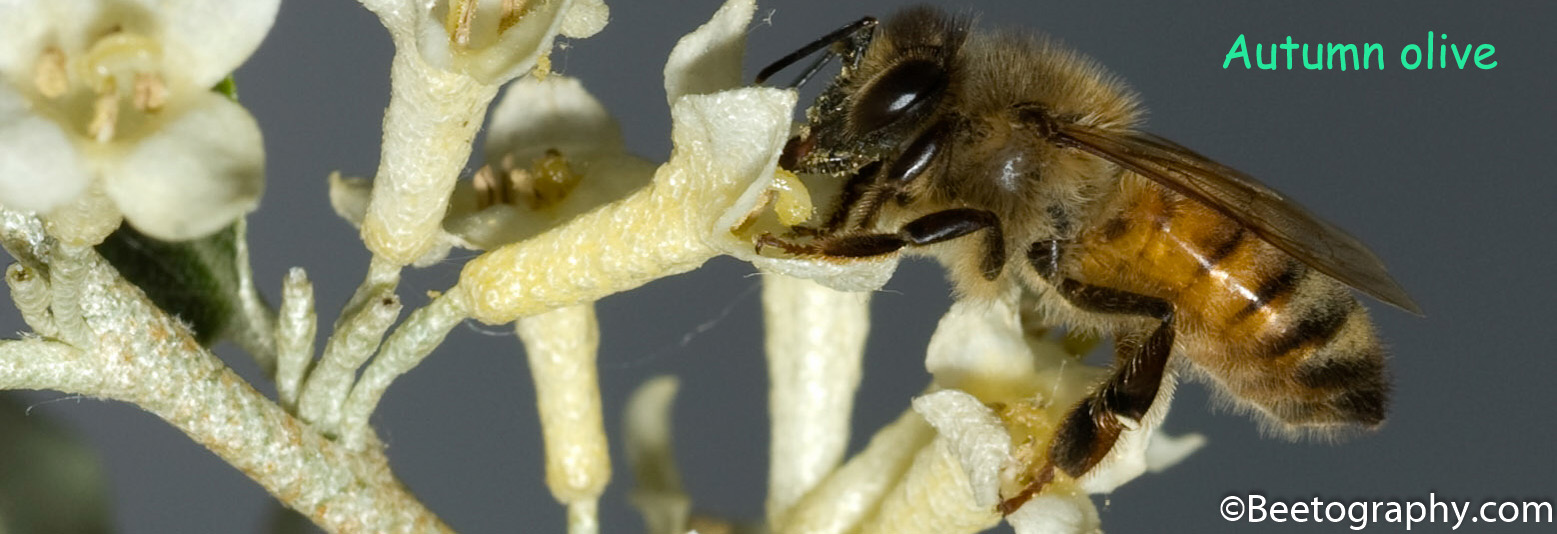
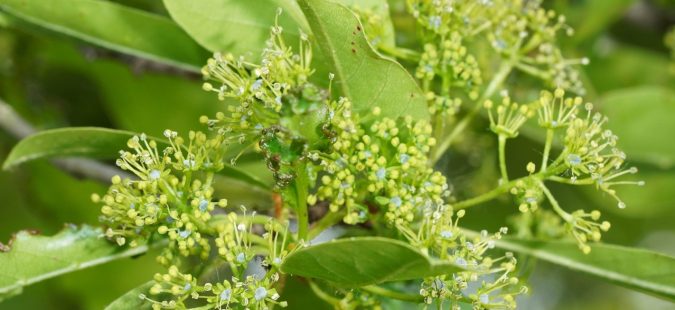
Hi Zach,
This flower looks a lot like the tiny flowers that a tree that I have produces but I have not been able to identify the elusive tree. The amount of bees that my tree attracts is insane. I can hear the buzzing sound of the bees from 100 feet away in a not so quiet urban area where I live. Around mid May, here in southern California, the floor below the canopy of my tree is covered with a carpet of florescent greenish from all the tiny flowers that have fallen due to the help of the foragers. The leaves of my tree have the shape of an olive tree but my tree also has thorns. I’ve tried researching and various apps for identifying trees but I still can’t seem to identify it. Does this sound like a tree you may be familiar with?
Yes, please send me a photo next year of the tree and closeup of the flowers.